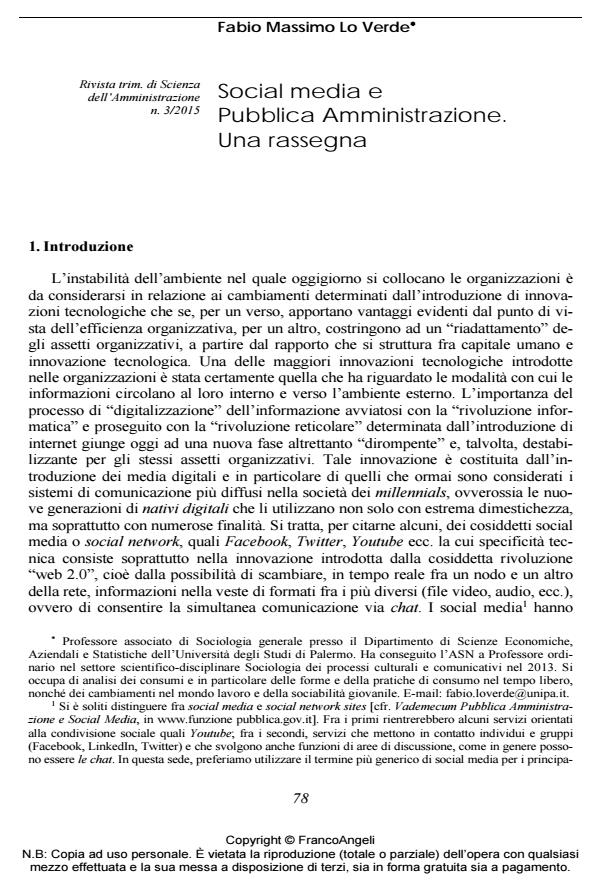Social Media and Public Administration. A Review
Journal title RIVISTA TRIMESTRALE DI SCIENZA DELL’AMMINISTRAZIONE
Author/s Fabio Massimo Lo Verde
Publishing Year 2015 Issue 2015/3
Language Italian Pages 14 P. 78-91 File size 82 KB
DOI 10.3280/SA2015-003006
DOI is like a bar code for intellectual property: to have more infomation
click here
Below, you can see the article first page
If you want to buy this article in PDF format, you can do it, following the instructions to buy download credits

FrancoAngeli is member of Publishers International Linking Association, Inc (PILA), a not-for-profit association which run the CrossRef service enabling links to and from online scholarly content.
Over the last twenty years, organizations have been "overwhelmed" by important social and economic changes whose causes can be traced, among others, in the changing characteristics of the environment in which they operate, the increased economic constraints they undergo and the unstable needs of the target they address. The introduction of technological innovation, especially ICTs and social media, have led to a permanent change in the processes of circulation of information within all organizations, including public authorities. And, above all, in the system of relations with the external environment that is now similar to a more immediate and, in some ways, more equal exchange, in comparison with the traditional hierarchical relationships among actors in different positions. In this paper we focus on these important changes, highlighting their specificities and the way they interest, at the same time, sociological theory, administration sciences and media studies.
Keywords: Social media - Public Administration - review
Fabio Massimo Lo Verde, Social media e Pubblica Amministrazione. Una rassegna in "RIVISTA TRIMESTRALE DI SCIENZA DELL’AMMINISTRAZIONE" 3/2015, pp 78-91, DOI: 10.3280/SA2015-003006